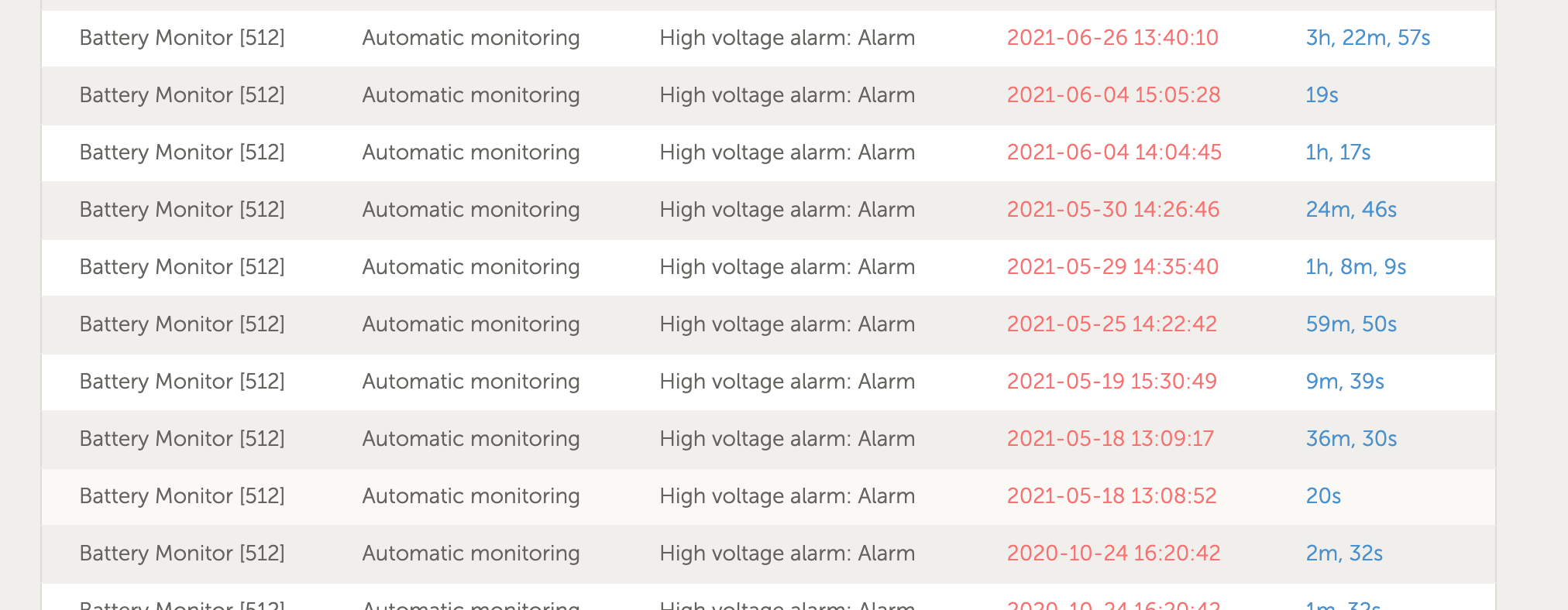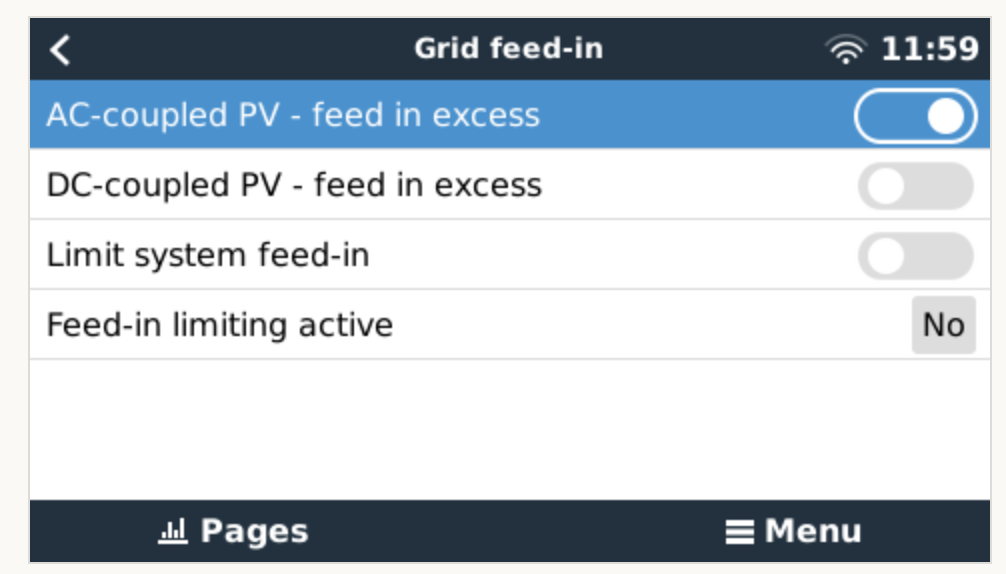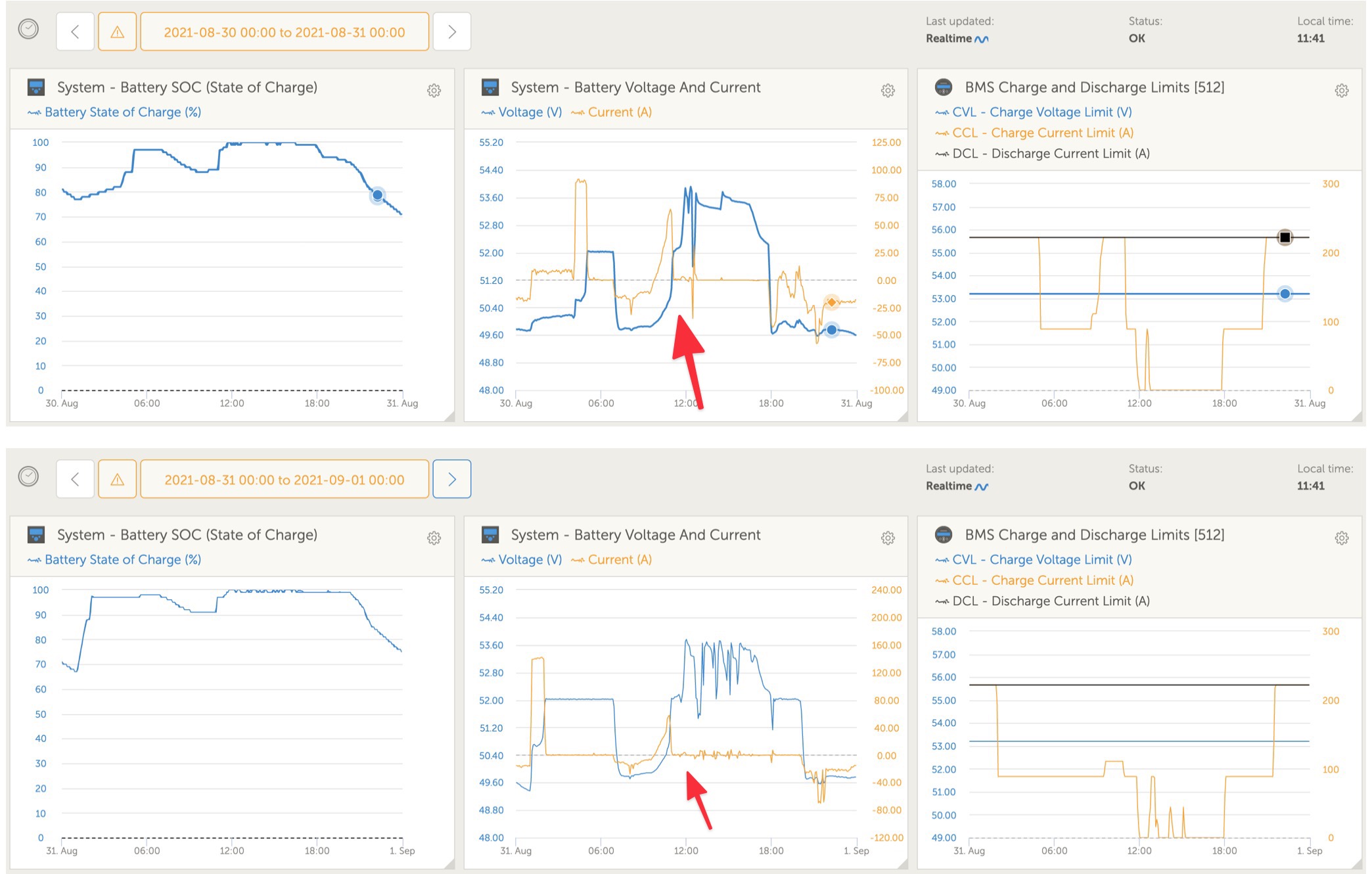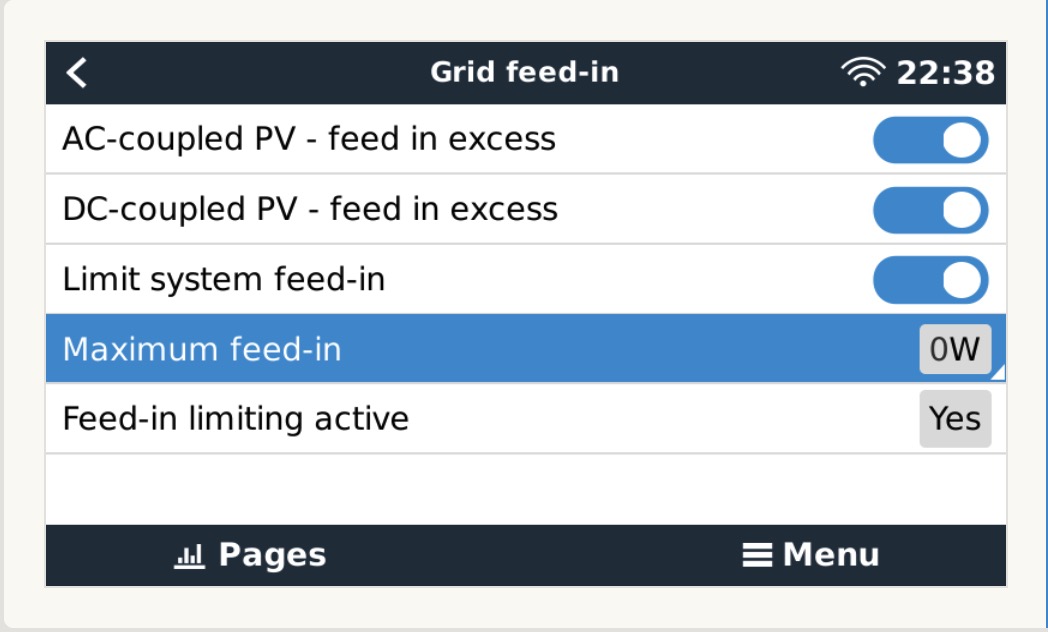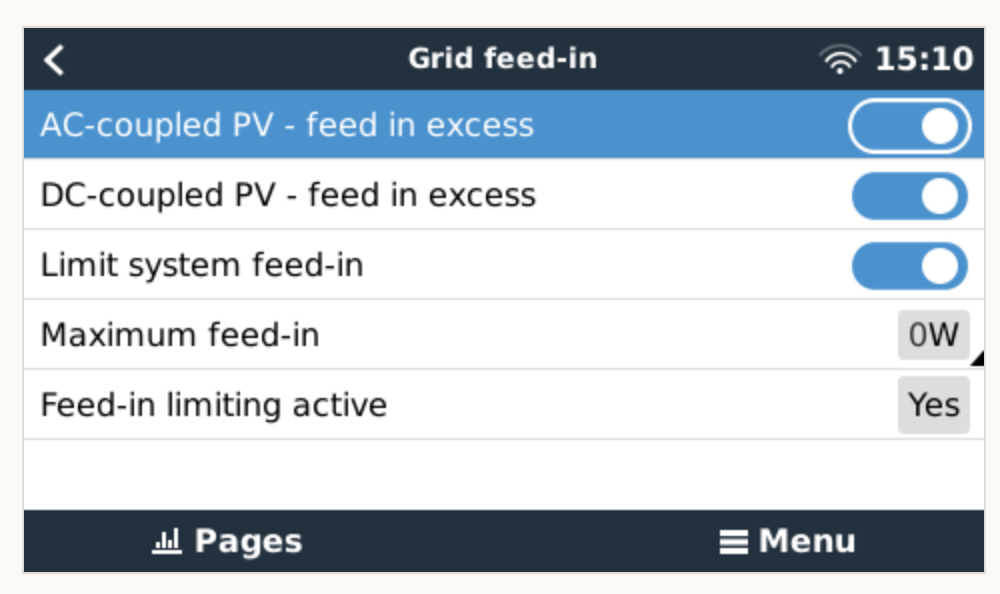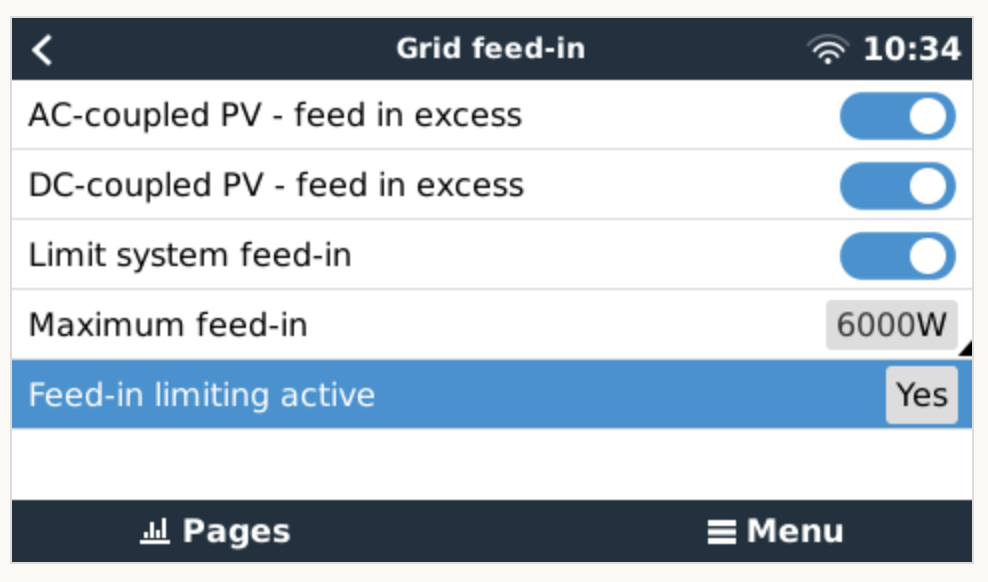I had this setup running flawlessly without alarms (except due to imbalance at start) for almost 1 year and in the last month I started to get High Voltage alarms. I have been in touch with Pylontech and tell me that is victron causing it due to high charge voltage... But I have all the settings lowered twice in the last week and I still get this issue.
Setup:
- 2 x Fronius 6Kw
- 1 x Victron Quattro 15000VA
- 6 x Pylontech US3000
Looking at battery voltage-current graph, on the left we can see how in the night the battery gets charged (with the grid) and regulates very well and keeps the max voltage on batteries around 51,52V quite stable.
On the right we can see how the battery its charged during the day, with excess solar but firstly it does not charge as smoothly as with grid (even it is charging at less amps) then once charged tthe battery voltage keeps shooting up until sometimes reaches even 54V.
What is causing victron to work differently during the night and day?
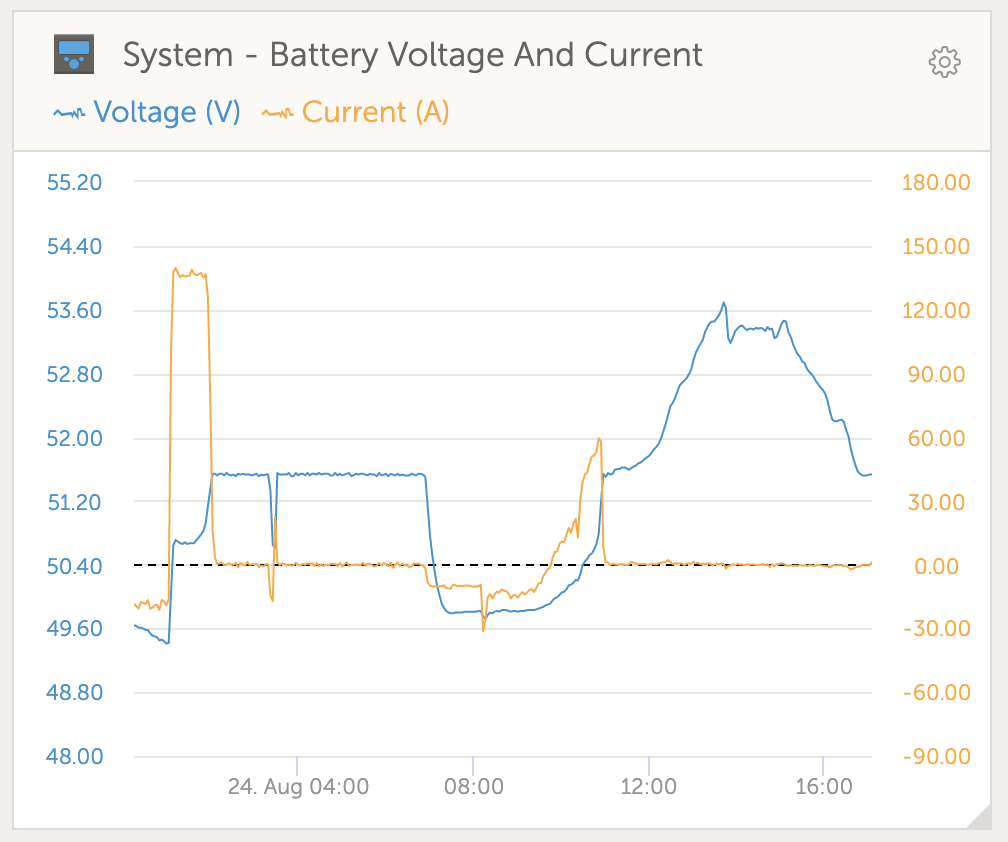
Here are the limits configured in VEconfigure and even limited on DVCC too. As pylontech support recommended.
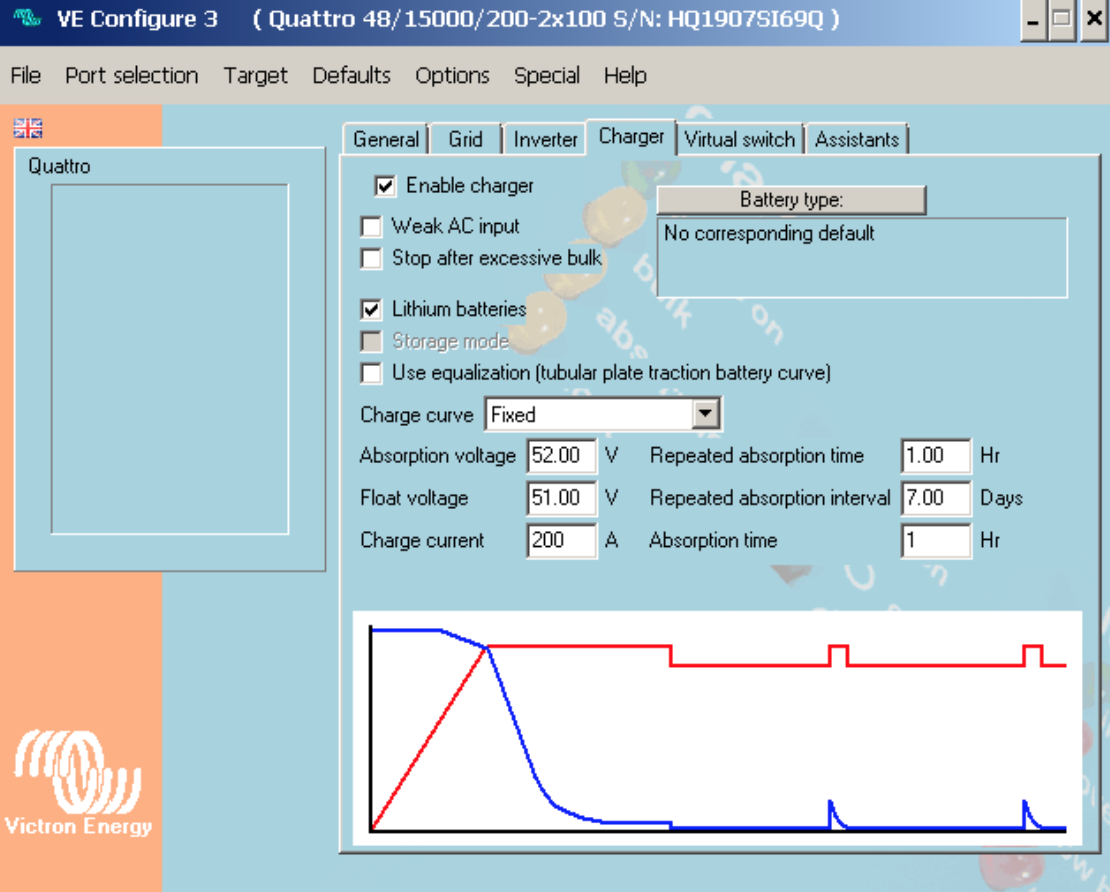

Should I even lower more the maximum charge voltage? I even limited the charge current to 2A during a few days and still got overvoltage alarms.
I have checked and all cells are balanced thus no idea what else might be going on.
Looking forward to some experienced Victron member to illustrate me why during the night and day is different.


